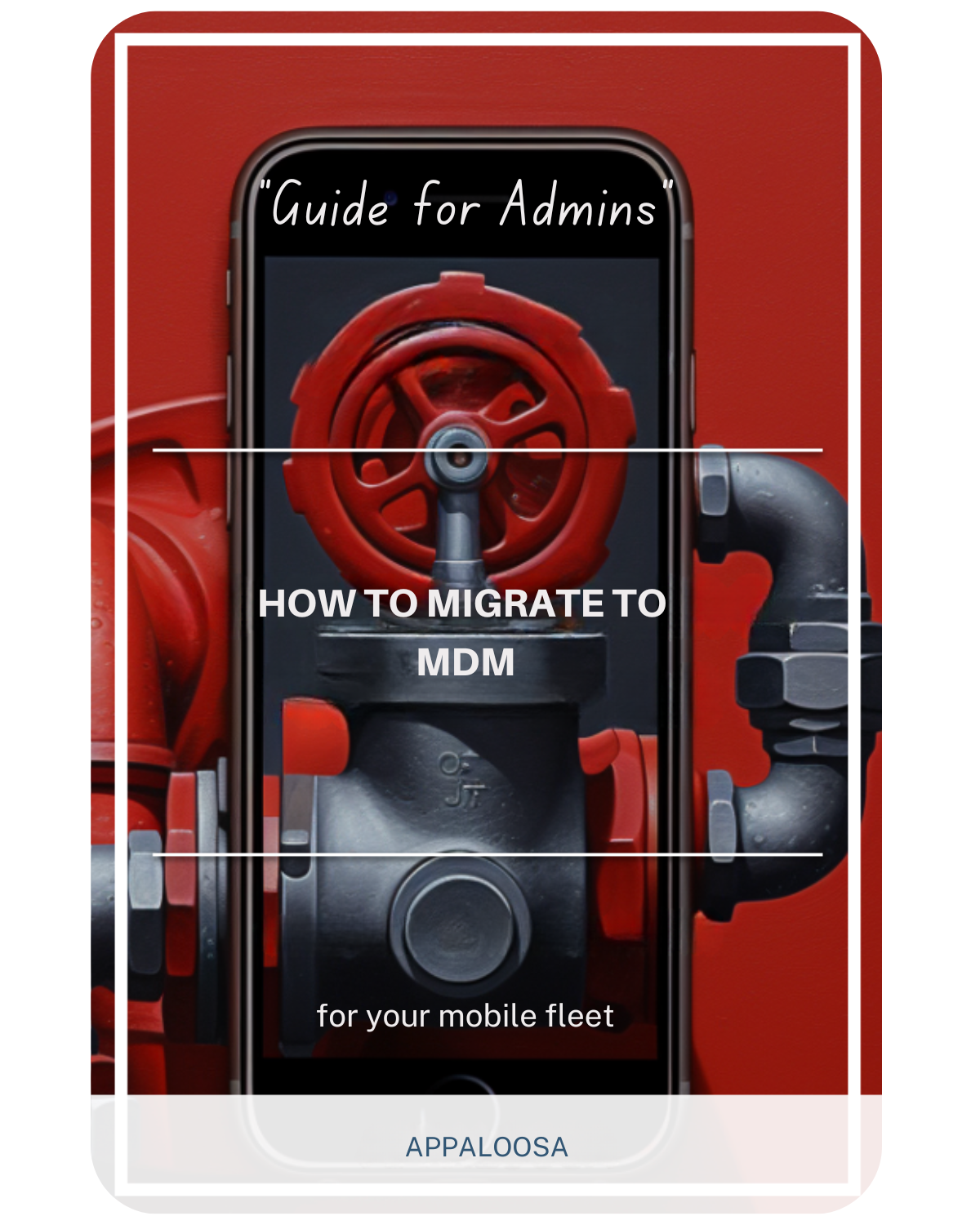Balancing Employee Privacy and Corporate Security in the Age of BYOD

As organizations increasingly adopt bring your own device programs, the challenge of maintaining employee privacy while ensuring corporate security has become a critical concern.
The implementation of enterprise BYOD strategies requires careful navigation between protecting business data and respecting personal privacy rights on employee owned device systems.
The Privacy Challenge in Modern BYOD Environments
BYOD business models have transformed how organizations approach workplace technology. While company owned devices traditionally allowed complete corporate control, the shift to personal devices introduces complex privacy considerations that affect both implementing BYOD strategies and employee satisfaction.
Modern work environments now often include hybrid models such as corporate owned personally enabled (COPE) devices alongside traditional BYOD approaches. Organizations must carefully balance security needs with privacy expectations in BYOD environments to maintain trust and compliance.
Understanding BYOD and COPE Models
When employees connect personal types of devices to company networks, they create a unique overlap between personal and professional digital spaces. This intersection raises fundamental questions about data ownership, monitoring boundaries, and privacy rights.
Organizations increasingly explore alternatives like corporate owned personally enabled (COPE) devices, which offer company-owned hardware with controlled personal use permissions.
This model provides a middle ground between pure BYOD and traditional corporate-only devices, offering different privacy implications for modern work environments.
The challenge intensifies when organizations must protect sensitive corporate information while avoiding intrusion into employees' personal lives on their own devices.
Whether implementing BYOD or COPE strategies, the privacy considerations remain complex and require careful navigation.
GDPR and Privacy Regulations in BYOD Context
The Impact of BYOD GDPR Requirements
BYOD GDPR compliance represents one of the most significant challenges for European organizations and any company handling EU citizen data.
The General Data Protection Regulation imposes strict requirements on how organizations collect, process, and store personal data, including data on employee devices. When personal devices access corporate network resources, organizations must ensure their BYOD policy for employees addresses several critical GDPR principles.
Privacy by design becomes essential in BYOD implementations. Organizations must build privacy protections into their BYOD and MDM solutions from the ground up, not as an afterthought.
This includes implementing data minimization practices, ensuring that MDM solutions only collect necessary information about personal devices rather than comprehensive device data.
Navigating Consent and Transparency
Under BYOD GDPR rules, organizations must obtain explicit consent from employees before implementing monitoring or management software on personal devices.
This consent must be freely given, specific, informed, and unambiguous. The BYOD company policy must clearly explain what data will be collected, how it will be used, and what rights employees have regarding their personal information.
Transparency requirements extend beyond initial consent. Organizations must maintain clear communication about any changes to monitoring practices, data collection policies, or security measures that might affect employee privacy.
This ongoing transparency helps build trust and ensures continued compliance with privacy regulations.
Developing a Privacy-Conscious BYOD Policy for Employees

Core Components of Privacy-Focused Policies
Creating an effective BYOD policy for employees requires addressing privacy concerns explicitly and comprehensively. The policy must clearly delineate between corporate and personal data, establishing boundaries that protect both business data and personal information.
Organizations should specify exactly what corporate access entails and what remains private on the employee's device.
Data segregation techniques play a crucial role in maintaining privacy. Modern BYOD bring your own device solutions often use containerization technology to create separate, encrypted spaces for work applications and data.
This approach ensures that corporate IT cannot access personal photos, messages, or applications while still maintaining security over company information.
Defining Monitoring Boundaries
The BYOD company policy must explicitly state what monitoring activities will occur and under what circumstances.
Employees need to understand whether their location will be tracked, which applications might be monitored, and what network activity could be visible to IT administrators. Clear boundaries help prevent privacy violations and maintain employee trust in the BYOD program.
Organizations should implement the principle of least privilege monitoring, collecting only the minimum data necessary to ensure security and compliance.
For instance, rather than monitoring all device activity, focus on corporate application usage and access to company resources. This approach respects privacy while maintaining necessary security standards.
Technical Solutions for Privacy Protection
MDM Configuration for Privacy
BYOD and MDM solutions must be configured with privacy in mind. Modern MDM platforms offer granular controls that allow organizations to manage corporate data without accessing personal information.
These systems can enforce security protocols on corporate applications while leaving personal apps untouched, creating a clear separation between work and personal digital spaces.
Privacy-preserving MDM features include selective wipe capabilities that remove only corporate data if a device is lost or an employee leaves the company. This ensures that personal photos, contacts, and applications remain intact while protecting company information.
Additionally, geo-fencing can be limited to work hours and corporate locations, preventing unnecessary location tracking during personal time.
Network Segmentation and Access Control
When personal devices connect to the corporate network, proper segmentation ensures that BYOD devices have access only to necessary resources.
This approach protects both corporate assets and employee privacy by limiting the potential for unauthorized access or monitoring. Virtual private networks (VPNs) can provide secure connections while maintaining privacy for personal internet usage outside of work applications.
Balancing Security and Privacy in BYOD Business Operations
Risk Management Without Invasion
Implementing BYOD successfully requires sophisticated risk management that doesn't compromise employee privacy. Organizations must protect against security breaches while respecting personal boundaries. This balance involves implementing security measures that focus on protecting corporate data rather than monitoring all device activity.
Zero-trust security models work well in BYOD environments because they verify access based on user identity and context rather than device ownership. This approach allows organizations to maintain strong security without requiring invasive device monitoring.
By focusing on securing data and applications rather than entire devices, companies can achieve their security goals while preserving privacy.
Employee Education and Awareness
A successful BYOD program depends on employee understanding and cooperation. Organizations must educate staff about both security risks and privacy protections.
Employees should understand how their personal data is protected, what security measures are necessary, and how to maintain both security and privacy on their devices in various work environments.
Training programs should cover secure usage practices, privacy rights, and the rationale behind various security measures.
When employees understand why certain protections are necessary and how their privacy is maintained, they're more likely to comply with security requirements and report potential issues promptly.
The Economics of Privacy-Conscious BYOD
Cost Saving Through Trust
While cost saving remains a primary driver for BYOD adoption, organizations that respect employee privacy often see additional financial benefits. Higher employee satisfaction leads to better retention rates, reducing recruitment and training costs.
Trust in the organization's privacy practices can also lead to better security compliance, reducing the risk of costly breaches.
Increasing productivity through BYOD works best when employees feel comfortable using their personal devices for work. Privacy concerns can create hesitation and reduced efficiency if employees worry about corporate monitoring.
By establishing clear privacy protections, organizations can maximize the productivity benefits of BYOD programs.
Investment in Privacy Infrastructure
Implementing privacy-preserving BYOD solutions may require initial investment in more sophisticated MDM platforms and security tools.
However, this investment pays dividends through reduced privacy incidents, better regulatory compliance, and improved employee relations.
Organizations should view privacy protection as an essential component of their BYOD infrastructure, not an optional addition.
Best Practices for Privacy-Preserving BYOD Implementation

Establish Clear Boundaries
Success in enterprise BYOD requires establishing and maintaining clear boundaries between corporate and personal data. Organizations should implement a BYOD strategy that clearly defines what corporate IT can and cannot access on personal devices.
These boundaries should be technically enforced through MDM configurations and policy settings, not just stated in documentation.
This applies whether organizations choose pure BYOD or corporate owned personally enabled (COPE) approaches, where company-provided devices allow some personal use.
Regular Privacy Audits
Conducting regular privacy audits ensures that BYOD practices continue to respect employee privacy while maintaining security.
These audits should review MDM configurations, access logs, and policy compliance to identify any privacy risks or violations. Regular assessment helps organizations stay ahead of privacy concerns and maintain employee trust.
Transparent Communication
Maintaining open communication channels about BYOD privacy practices builds trust and encourages compliance. Organizations should provide regular updates about any changes to privacy policies, new security measures, or incidents that might affect employee privacy.
This transparency demonstrates respect for employee privacy and helps maintain a positive BYOD culture.
Future Considerations for BYOD Privacy
Evolving Privacy Regulations
As privacy regulations continue to evolve globally, organizations must stay informed about new requirements that might affect their BYOD programs.
Beyond GDPR, regulations like the California Consumer Privacy Act (CCPA) and emerging privacy laws in other jurisdictions will shape how organizations approach BYOD privacy.
Technological Advances
Emerging technologies offer new opportunities to enhance privacy in BYOD environments. Advanced encryption methods, improved containerization technologies, and AI-driven security solutions that respect privacy boundaries will continue to evolve.
Organizations should stay informed about these developments and be prepared to adopt privacy-enhancing technologies as they mature.
Conclusion
Balancing employee privacy with corporate security in BYOD environments requires thoughtful planning, appropriate technology, and ongoing commitment to both privacy and security principles. Organizations that successfully navigate this balance create BYOD business environments that protect corporate assets while respecting employee privacy rights.
The key to success lies in transparency, appropriate technical controls, and a genuine commitment to privacy protection.
By implementing privacy-conscious BYOD company policy frameworks and maintaining open communication with employees, organizations can realize the benefits of BYOD while building trust and maintaining compliance with privacy regulations.
As the workplace continues to evolve, the organizations that master the privacy-security balance in their BYOD programs will enjoy competitive advantages in talent acquisition, employee satisfaction, and operational efficiency.
The future belongs to companies that recognize privacy protection not as a barrier to BYOD success, but as an essential foundation for sustainable and ethical business practices.
